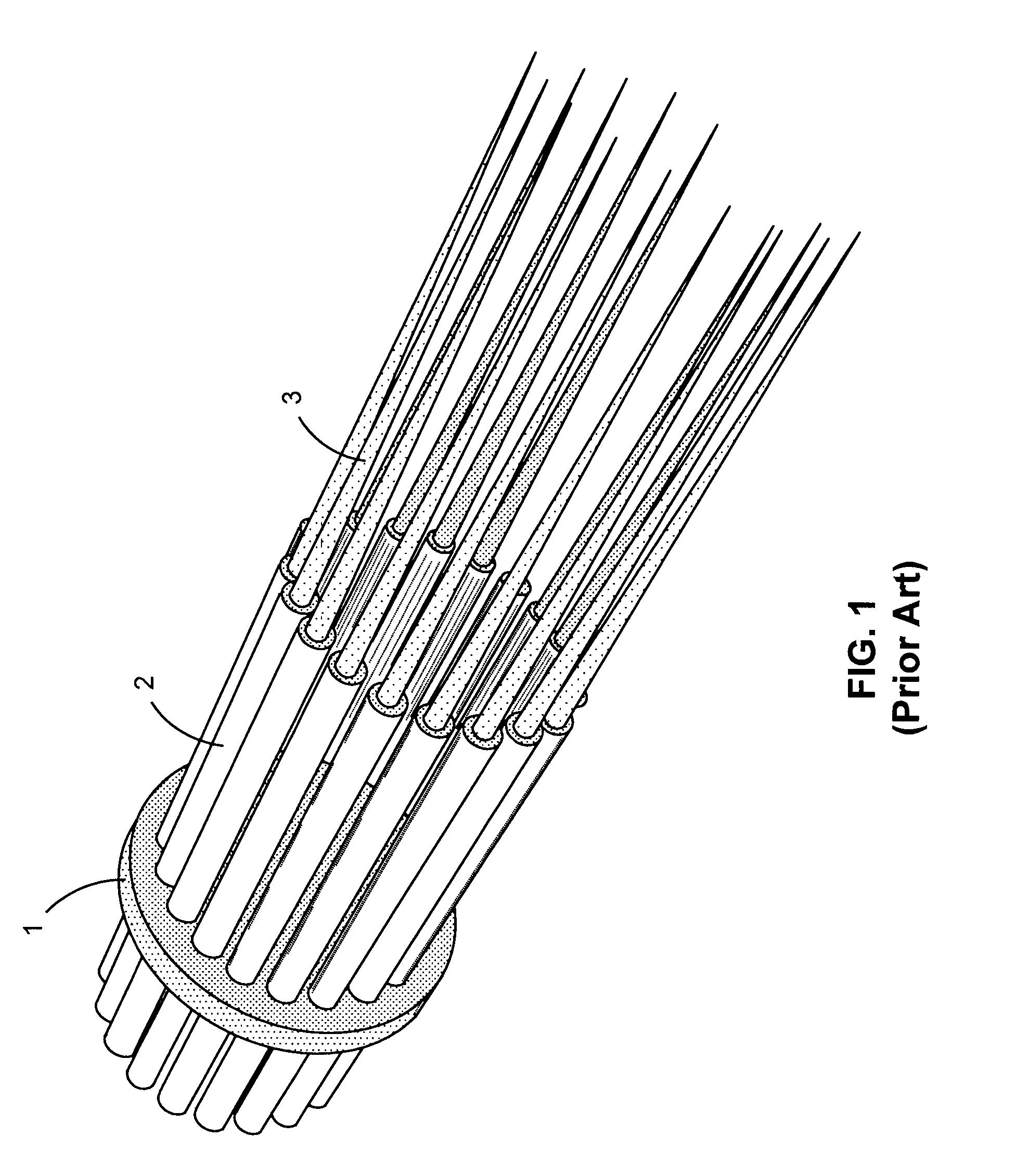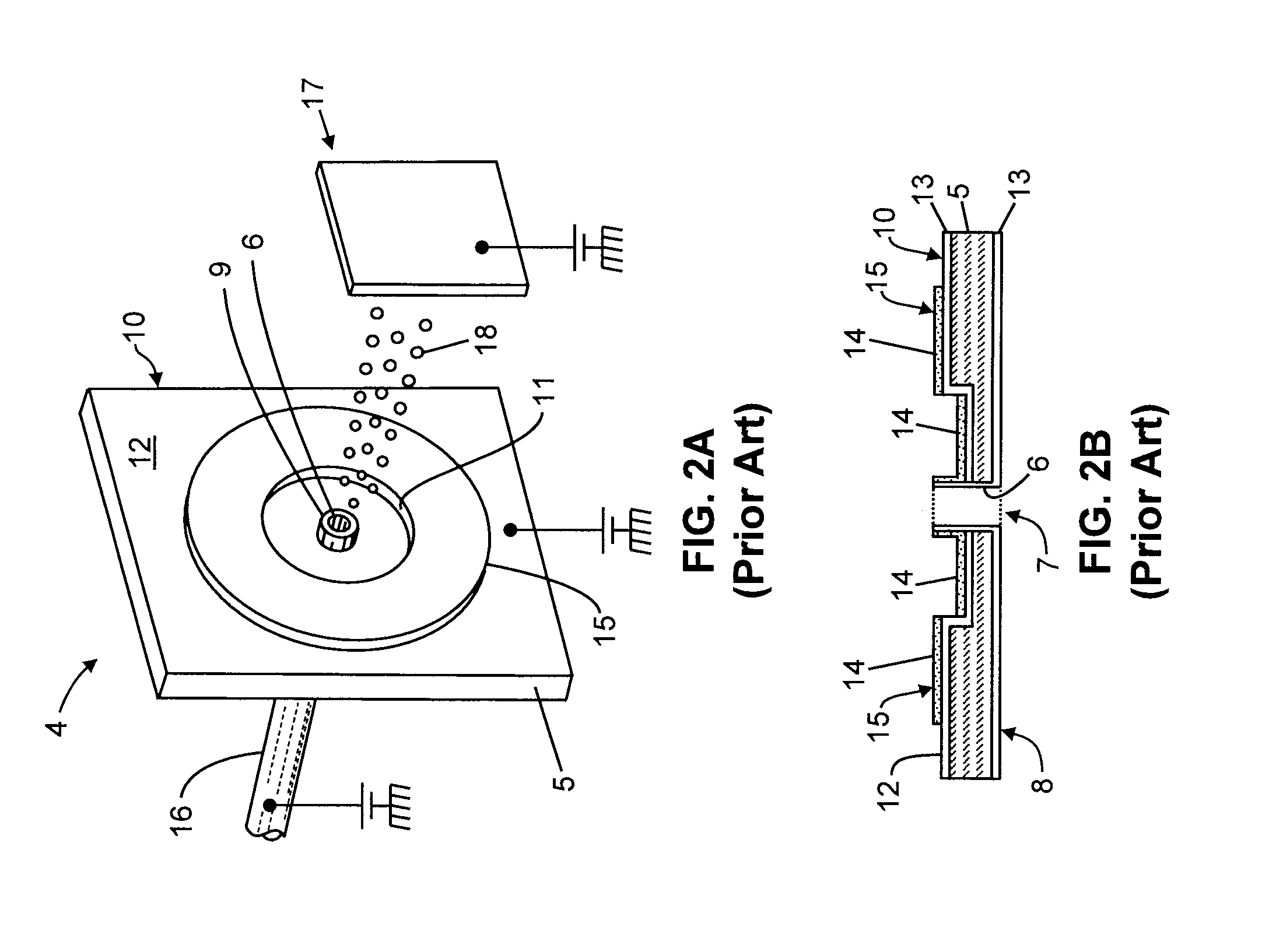Multi-needle multi-parallel nanospray ionization source for mass spectrometry
a mass spectrometry and nanospray technology, applied in the field of nanoelectrospray ionization sources, can solve the problems of difficult production of sprays, interference in the detection and quantification of analytes, and difficult handling, and achieves high ionization efficiency, simple manufacturing, and robust multi-sprayer devices.
- Summary
- Abstract
- Description
- Claims
- Application Information
AI Technical Summary
Benefits of technology
Problems solved by technology
Method used
Image
Examples
Embodiment Construction
[0030]The present invention provides methods and apparatus for an improved ionization source for mass spectrometry. The following description is presented to enable one of ordinary skill in the art to make and use the invention and is provided in the context of a particular application and its requirements. It will be clear from this description that the invention is not limited to the illustrated examples but that the invention also includes a variety of modifications and embodiments thereto. Therefore the present description should be seen as illustrative and not limiting. While the invention is susceptible of various modifications and alternative constructions, it should be understood that there is no intention to limit the invention to the specific forms disclosed. On the contrary, the invention is to cover all modifications, alternative constructions, and equivalents falling within the essence and scope of the invention as defined in the claims. To more particularly describe th...
PUM
| Property | Measurement | Unit |
|---|---|---|
| width | aaaaa | aaaaa |
| threshold velocity | aaaaa | aaaaa |
| threshold velocity | aaaaa | aaaaa |
Abstract
Description
Claims
Application Information
 Login to View More
Login to View More - R&D
- Intellectual Property
- Life Sciences
- Materials
- Tech Scout
- Unparalleled Data Quality
- Higher Quality Content
- 60% Fewer Hallucinations
Browse by: Latest US Patents, China's latest patents, Technical Efficacy Thesaurus, Application Domain, Technology Topic, Popular Technical Reports.
© 2025 PatSnap. All rights reserved.Legal|Privacy policy|Modern Slavery Act Transparency Statement|Sitemap|About US| Contact US: help@patsnap.com



